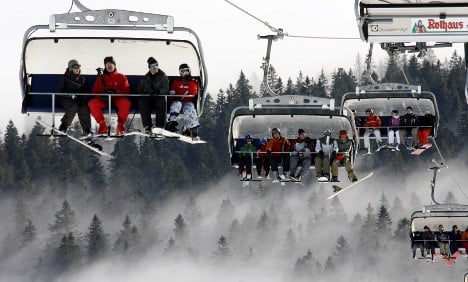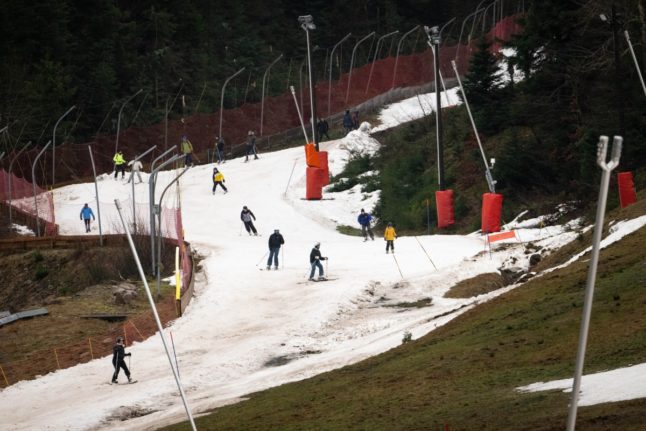In the past, getting to the popular Bavarian ski resort of Winklmoosalm involved a cramped, winding bus ride for five kilometres before visitors could breathe fresh Alpine air.
But the resort just opened a gondola that has improved the ride to a comfortable 10 minutes – despite the danger that global warming could make new infrastructure on the slopes a very bad investment indeed.
They’re not the only ones. Transport operators at ski resorts and mountain tourist destinations across Bavaria are investing heavily in infrastructure such as comfortable chairlifts and snow-making machines.
Similarly ambitious to the €13 million, eight-person gondola cars at Winklmoosalm is the new Kandahar-Express in the resort town of Garmisch-Partenkirchen. The six-person chairlift is even fitted out with heated seats. Meanwhile skiers using the Fluh-Express in the Skiarena Steibis in the Oberstaufen region of Bavaria can also luxuriate with warm bottoms.
In the next few years the Alps will see millions of euros more in investment as the classic Bavarian ski areas battle to keep up with one another and the warming climate.
One reason behind the building boom is a drop in sales tax on chairlifts and aerial trams. Since January 1, 2008, only the new tax rate of 7 percent has been added to the cost of lift tickets.
“We fought for years for that,” said Hannes Rechenauer, the spokesman for the Association for German Cable Cars and Lifts (VDS). “Now the lift operators can put more capital aside for investment.”
In addition, more money is coming from government coffers. The upper limit for assistance to ski area modernisation has been raised from 15 to 35 percent of the amount being invested.
Sudelfeld, a traditional ski resort near Munich, should also profit from this windfall. Over the next few years, some €45 million will be spent replacing 16 ageing lifts with six or seven efficient chairlifts. Also, powerful snow-making machines will be used to create easily accessible pistes between 800 and 1,600 metres. For that, a two-hectare reservoir will be constructed.
“If we don’t invest in Sudelfeld now, we’ll gradually lose business,” said Harald Gmeiner, tourism director of the Bayrischzell municipality at the foot of Sudelfeld.
Climate change doesn’t worry Gmeiner. A climatologists’ report has shown that the ski fields of Sudelfeld will still be profitable even in 25 to 30 years – though not without artificial snow. But in Bavaria, snow-making machines are now just as common as they are in Austria or northern Italy.
“With the new equipment, three to four cold days is enough for us to prepare the whole area,” said Gmeiner. “The whole region depends on it.”
Environmentalists who oppose the use of the snow-making machines have by now all but given up.
“The levees have long ago broken, even in Bavaria,” said Christine Markgraf, of the Environmentalist Federation (BN). “Almost everything is de facto approved.”
Also controversial is the plan to link the Oberallgäu ski fields of Grasgehren and Balderschwang via a new lift on the Riedberger Horn. The fields lie in the “Zone C” of the Bavarian “Alp plan” and are supposed to be protected from development.
“If this is allowed to go ahead, it would be the first such case in the 37-year history of the Alp plan,” said Andreas Güthler of the International Commission for the Protection of the Alps, who warned of an eroding protective system.
The Bavarian Finance Ministry insisted it was sticking to the Alp plan and ruled out further building of ski lifts in Zone C, which makes up 43 percent of the mountain range in Germany.
But environmentalist Markgraf wasn’t reassured, describing the current wave of investment as “pure, last-minute panic.”
“Actually everyone knows that the ski fields in Bavaria no longer have a future, apart maybe from the highest reaches of Garmisch and Oberstdorf,” he said.



 Please whitelist us to continue reading.
Please whitelist us to continue reading.
Member comments